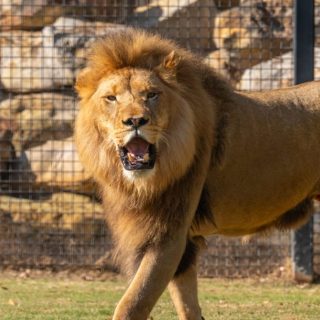AMERICAN ALLIGATOR
SPECIES: swamps, ponds, and rivers


Alligators have an armoured body with bony plates for protection across their back. Their front feet have 5 toes with claws to assist them on the land, with their back feet being 4 webbed toes aiding in swimming.
An alligator's tail is very powerful and can propel them through the water, but being solid muscle makes them heavy and slower on the land. Alligator's teeth are interlocking with each tooth fitting into a socket on the opposite jaw. They will usually have 74-80 teeth at one time but can go through 2000-3000 teeth in a lifetime as they are replaced after falling out.
They prefer a cooler climate to other crocodilian species and live furthest away from the equator. They are the apex predator of their habitat.
Diet
Whilst juvenile Alligators mainly eat fish, frogs and birds, as they grow alligators regularly consume turtles & small mammals and being opportunistic feeders they occasionally hunt large prey from the water's edge.
Alligators were once hunted for their leather; the population declined rapidly giving them an endangered status in 1967, however the species has made a full recovery since.
ANIMAL FACTS
AMERICAN ALLIGATOR
GROUP NAME
Congregation
Native To
SIZE
Males - an average length of 3.4m, Females an average of 2.6m up to 500kg in weight
BABY NAME
Hatchling
Habitat
Swamps, ponds, and rivers

Did You Know?
During breeding season the female can lay up to 50 eggs in a secure nest, the incubation temperature will determine the sex of the babies

stay in touch with Your Australian wildlife parks family
Stay up-to-date and subscribe to our newsletters
Your information is only utilised by Australian Wildlife Parks. For more information see our privacy policy.
Australian Wildlife Parks acknowledges Aboriginal people as the traditional custodians of the land on which our offices and operations are located, and we pay our respects to Elders past, present and emerging.
© 2021-2024 Australian Wildlife Parks • Privacy Policy • Disclaimer
